Which Infertility Treatment Methods Help you Get Pregnant Faster?
Fertility Treatment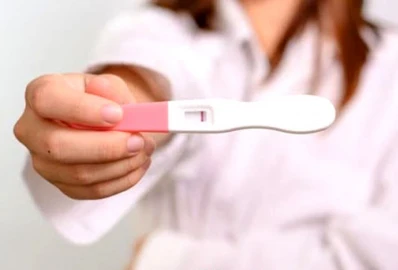
e desire to have children is one of the important human characteristics that help revive the human race. However, pregnancy cannot sometimes occur naturally. Age, obesity, certain diseases, stress, smoking, exposure to industrial pollution, drug intake, and unhealthy diet may affect fertility.
Fortunately, with new developments in science and technology and skilled doctors' efforts, several reproductive techniques have been found today to help infertile couples have children. It should be noted that infertility treatment differs in every patient depending on factors such as the couple's age, infertility cause and length, and personal preferences. Although, patients should not forget that the process of infertility treatment requires lots of patience and financial and emotional support because there is sometimes a risk of failure in the initial stages of treatment.
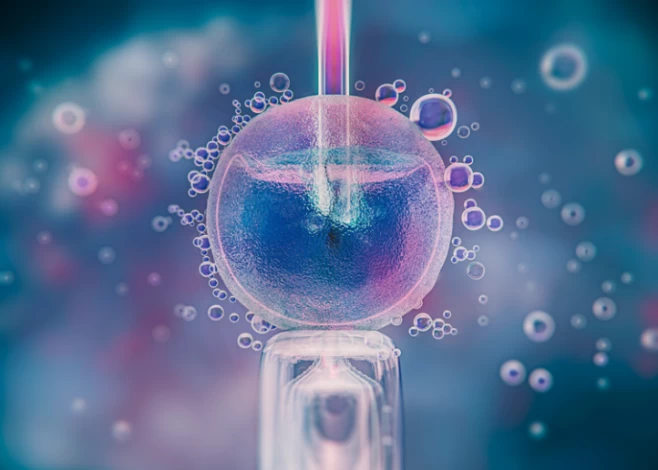
How Is Infertility Diagnosed?
Couples should see an OB/GYN in case of failure to get pregnant after repeated attempts. The first step for diagnosing infertility is to check the possibility of male infertility. This will be done through a semen analysis that examines the sperm count and quality. If the test result is normal, female infertility will be checked in the next step.
The diagnostic tests for female infertility include tests that check the hormonal imbalance, ovulation disorders, the possibility of endometriosis, and fallopian tube disorders (Hysterosalpingography, or HSG).
What Are the Different Options for Infertility Treatments?
After diagnosing the cause of female infertility, it is time to choose the best treatment method for a healthy pregnancy.
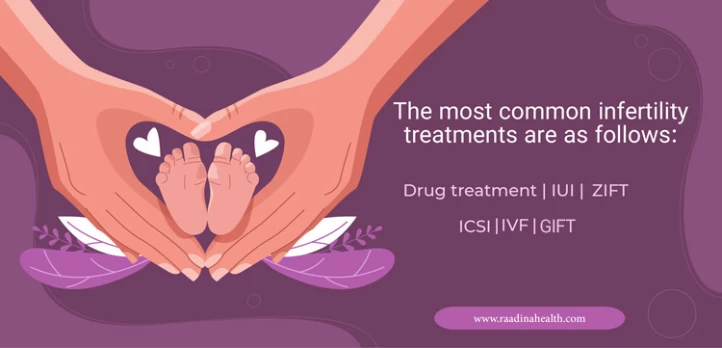
The most common infertility treatments are as follows:
- Drug treatment;
- IUI;
- IVF;
- Intracytoplasmic sperm injection (ICSI);
- GIFT;
- ZIFT;
Read on to learn about each in detail.
Drug Treatment for infertility
Drug treatment is used if the infertility causes are factors like hormonal imbalance or decreased body hormones. Doctors will also use drug treatment in case of unexplained infertility.
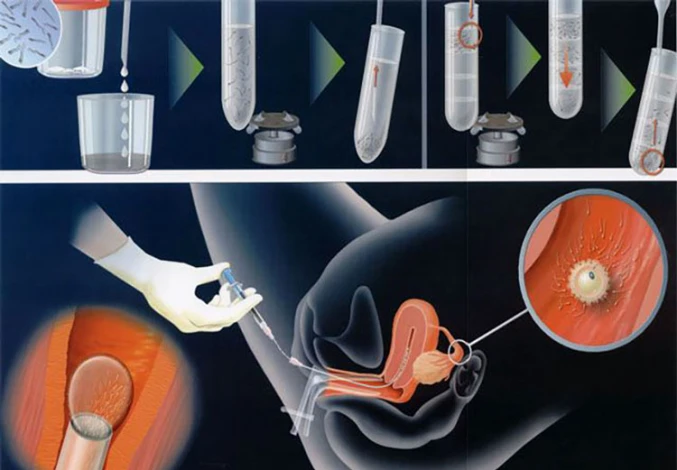
IUI Treatment
Intrauterine insemination (IUI) is an assisted reproductive technology (ART) for couples who have failed to conceive within one year despite having unprotected sex. IUI's main goal is to improve the chances of pregnancy by increasing the number of sperm that reach the fallopian tubes, where fertilization occurs.
Human chorionic gonadotropin (HCG injection) is used during the IUI method to stimulate ovulation after egg maturation. Then, the sperm is washed and directly injected into the uterus through a catheter (thin elastic tube).
IVF Treatmeant
In-vitro Fertilization (IVF) is one of the most well-known and oldest infertility treatments, first performed by Dr. Robert Geoffrey Edwards in England in 1978.
During the IVF procedure, after ovulation stimulation and retrieving mature eggs, the eggs are fertilized with high-quality sperm in a laboratory. The fertilized egg (embryo) is then transformed into the uterus within 2 to 5 days after egg retrieval.
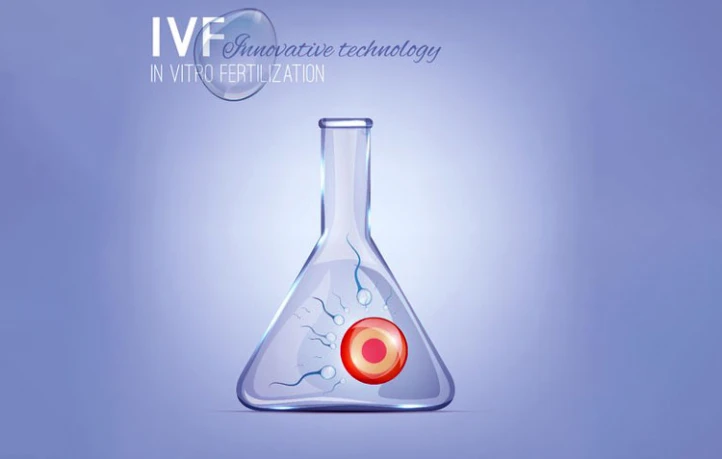
Intracytoplasmic sperm injection (ICSI)
ICSI (Intracytoplasmic sperm injection) is an effective infertility treatment in which the sperm is injected directly into the mature egg by a thin needle. This treatment is almost similar to IVF. Except for in the IVF method, sperm and egg are put next to each other in a laboratory dish to join each other. In ICSI treatment, there is no need for a large number of sperm as only a single sperm is injected into the egg.
The embryo transfer is done after fertilization, like in the IVF method. In the intracytoplasmic sperm injection method, the number of fertilized eggs transferred to the uterus is less than in other methods. Therefore, there is a lower risk of multiple births or ectopic pregnancy.
Gamete intrafallopian transfer (GIFT)
GIFT (intrafallopian gamete transfer) is a helpful treatment method for infertile couples with cervical disorders, endometriosis, and immune system disorders. In this method, the mother's fallopian tubes should be healthy since the sperm and egg are put directly into the fallopian tubes using laparoscopy.
It should be noted that GIFT is sometimes done through the vagina to reduce costs.
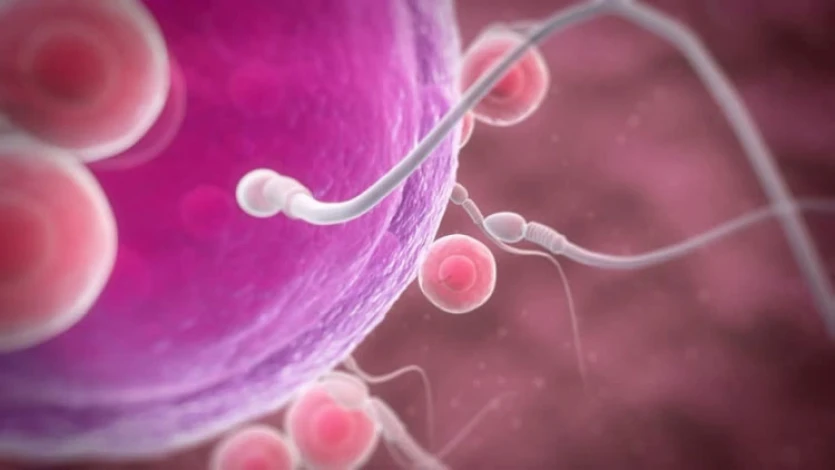
Zygote intrafallopian transfer (ZIFT)
Zygote intrafallopian transfer (ZIFT) combines IVF and GIFT methods. The ZIFT method is performed when the cause of female infertility relates to damaged or blocked fallopian tubes.
The difference between ZIFT and GIFT is that in the GIFT method, the sperm and egg are mixed and then transferred to the fallopian tubes, while in the ZIFT method, the fertilized egg (embryo) - in the zygote stage - is transferred to the fallopian tubes. This makes ZIFT more successful than ICSI and IVF.
It should be noted that depending on the patient's age, the uterine condition, and the quality of the embryos, a larger number of embryos - usually up to 4 embryos - are placed in the fallopian tubes by laparoscopy, according to the opinion of the doctor. This may increase the risk of multiple births and ectopic pregnancy.
In the treatment of infertility, doctors may also use the following measures:
- Blastocyst transfer in IVF
- Cervical cerclage treatment
- Laparoscopy for infertility
- Testicular sperm aspiration (TESA)
- PRP infertility treatment
- Pre-implantation genetic diagnosis (PGD)
Blastocyst transfer in IVF
Blastocyst embryo transfer is used in special circumstances depending on the patient's medical history and the number of fertilized eggs. This method can help choose the best embryos and improve embryo implantation. During blastocyst transfer, the embryos are cultured for 5 to 6 days rather than the usual 2 or 3 days and then are transferred to the uterus. The reason is that the success of pregnancy largely depends on the implantation of a healthy blastocyst to the uterine wall.
A blastocyst is an embryo that is 5 - 6 days old and divided into two types of cells (cells forming the placenta and cells forming the fetus's body). In the blastocyst transfer method, the embryo is cultured in the incubator of the embryology laboratory until it reaches the blastocyst stage. Then one or two embryos with better growth potential are chosen by the doctor and transferred into the uterus.
One advantage of the blastocyst embryo transfer method is that it reduces the risk of multiple births and ectopic pregnancy.
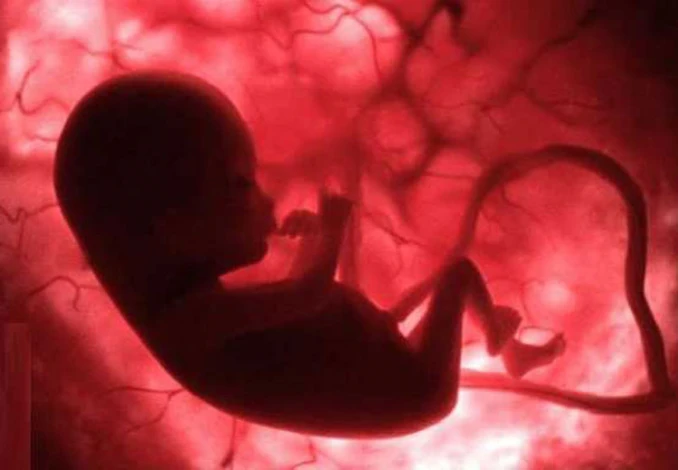
Cervical cerclage treatment
Cervical cerclage treatment is used when the cervix is weakened and cannot bear the pressure of pregnancy. During cervical cerclage, the cervix is sewn with stitches during weeks 12 to 14 of pregnancy. The sutures are removed when there is no risk of miscarriage.
Laparoscopy for infertility
Laparoscopic surgery for infertility can be used for women with female reproductive tract disorders, fallopian tube disorders, endometriosis, and fibroids. If pregnancy still does not occur with the surgery, the doctor suggests infertility methods such as IVF. It should be noted that laparoscopic surgery is also used in men to open any blocking that can affect a man's ability to ejaculate sperm.
During laparoscopy, the surgeon makes a small incision in the abdomen and then inserts a tubular surgical instrument with a camera called "trocar" to examine the abdominal and uterine organs. In the next step, the surgeon injects a contrast liquid into the uterus to check blocked fallopian tubes or endometriosis. In case of blocked tubes or fibroids, the doctor will fix the problem simultaneously to increase the chances of pregnancy.
Testicular sperm aspiration (TESA)
Testicular sperm aspiration (TESA) is used to obtain sperm in men with little or no sperm in their semen. This infertility treatment can also be used when the quantity and quality of sperm are decreasing. Testicular biopsy is one of the most common methods of sperm retrieval.
PRP infertility treatment
Repeated implantation failure (RIF) is one of the biggest problems patients face in IVF treatment. RIF refers to cases in which patients have failed 3 times at the implantation stage of in-vitro fertilization (IVF).
Research shows that PRP (platelet-rich plasma) can help the growth of endometrium in patients with thin endometrium. This will increase the chance of pregnancy.
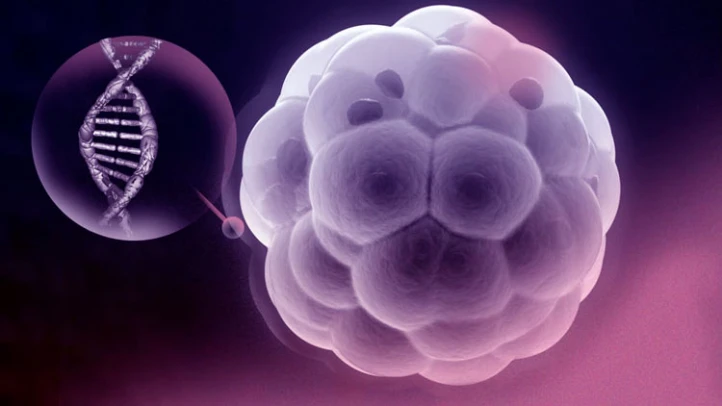
Pre-implantation genetic diagnosis (PGD)
Prenatal diagnosis (PND) was performed after fertilization and natural pregnancy to prevent genetic and hereditary diseases. However, today, Pre-implantation genetic diagnosis (PGD) is used along with assisted reproductive technologies (IVF/ICSI) to diagnose genetic disorders in early embryos before implantation and prevent miscarriages.
Alternative Methods for infertility treatment
In case of not getting pregnant with the above methods, alternative methods exist to treat infertility, such as egg donation, surrogacy, and sperm donation.
Pregnancy with Embryo Donation
Embryo donation is used for couples with unhealthy eggs or sperm which cannot conceive a biological embryo. In this method, the remained embryos from another couple's IVF treatment are donated to an infertile couple. So, as the donated embryo is formed and grows in an infertile woman's uterus, there will be a good connection between the mother and the baby.

Egg Donation
During an egg donation method, the egg is collected from a female donor and fertilized with sperm in the laboratory. The fertilized egg is then transferred to the uterus of the infertile woman. This infertility method can be used for women who have removed ovaries, premature ovarian failure or low ovarian reserve, past chemotherapy and radiation therapy, repeated miscarriages, genetic disorders, infertile women over 40 years, etc.
Sperm Donation
Male infertility occurs when a man's sperm has chromosomal abnormalities or oligozoospermia (low sperm count). Sperm donation is used in male factor infertility cases.
Surrogacy
Surrogacy is used when the mother does not have a healthy uterus to carry, hold, and grow the embryo. To perform surrogacy, one of the assisted reproductive technologies is first performed, and the resulting embryo from the mother's egg and the father's sperm is transferred to the uterus of a surrogate mother who has a healthy uterus.

What Are the Success Rates of Infertility Treatment Methods?
The success rates of infertility treatment methods depend on factors such as the patient's age, the cause of infertility, and the quality of medical services. Although, their results are promising in most cases.
According to statistics, the chance of pregnancy with IVF is about 50% in women under 34 years old. It decreases by 10% in women between 35 and 37 years old and will lower more in women over 40.
If ovulation stimulation drugs are used with the IUI method, the chance of pregnancy increases to 10-20% in each cycle. For example, clomiphene citrate can help 35% of infertile women to achieve pregnancy within 3 and 6 IUI cycles.
Furthermore, following lifestyle factors like maintaining a healthy weight, having a proper diet, reducing the consumption of caffeinated drinks, quitting smoking, and avoiding stress and anxiety can increase the success rates of assisted reproductive technologies.
How to Choose a Suitable Infertility Doctor and Center?
One of the ways to choose an expert doctor and the right clinic or hospital for infertility treatment is to pay attention to their regulations for patient reception. The reason is that some infertility centers do not accept women over 40 or couples with acute problems to make their resumes on success rates of infertility treatments look good.
Also, some doctors place 4-5 embryos in women's uterus in the IVF method to increase the chance of pregnancy. This is even though the recommended number of embryos to be transferred during each IVF cycle is 2-3.

Fertility Treatment in Iran
Iran is one of the leading countries in the field of fertility treatment. It is a favorable medical destination for many patients worldwide who seek to take advantage of being treated by skilled physicians in well-equipped medical centers at reasonable prices. Iranian doctors suggest the best treatment method according to the cause of infertility.
We at Raadina Heath help you to experience a successful medical tourism trip in Iran. Before your arrival, we will review your medical records, perform tests, and, after consulting with a specialist, recommend the most appropriate treatment for you. We also book appointments with the best Iranian specialists and medical centers and will be by your side during your treatment process in Iran.
FAQs About Liposuction Aftercare
1.What’s the fastest way to get pregnant through fertility treatment?
IVF (In vitro fertilization) is often the fastest and most effective ART option, especially when there’s a known infertility problem.
2.How quickly can you expect to get pregnant with ART?
Depending on the treatment and your situation, pregnancy can occur within a few weeks to a few months. IVF treatment tends to be faster than other ART methods.
3.Is IVF faster than IUI?
Yes. IVF treatment generally has higher success rates and faster results, especially for women with advanced maternal age, e.g., over 35, or couples with more complex infertility problems.
4.Can I take any medicine to get pregnant fast?
Some ovulation-stimulating drugs like Clomid or Letrozole can work within a few cycles. However, they’re less effective than IVF or IUI in more complicated cases.
5.Does my age influence how quickly infertility treatments work?
Yes. Fertility declines with age. Therefore, younger women tend to respond better and faster to infertility treatments.






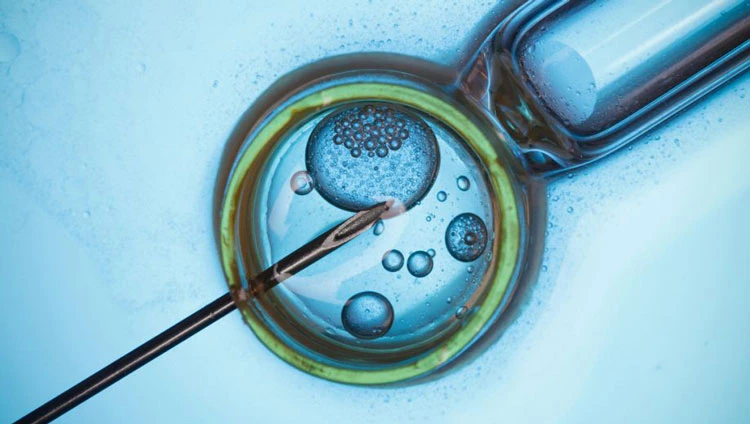
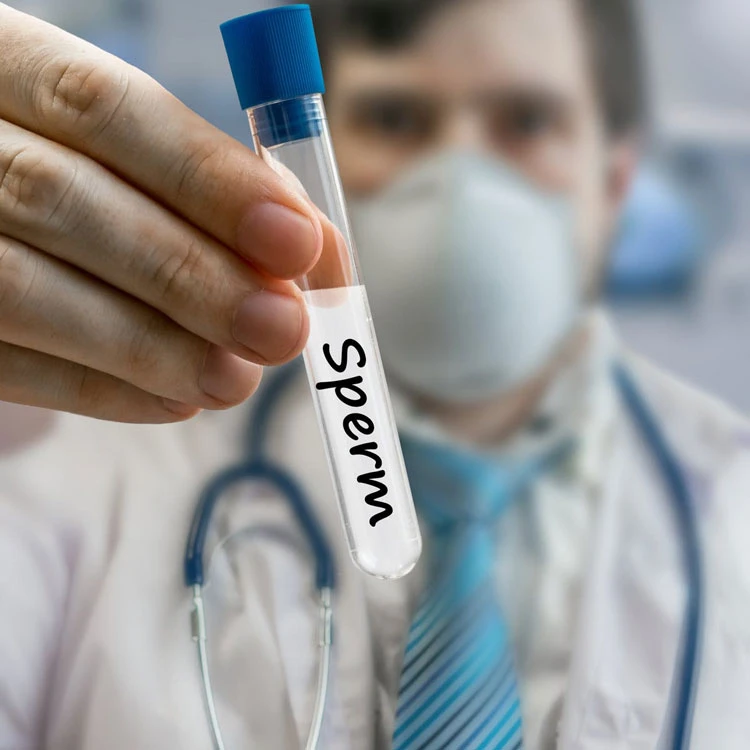
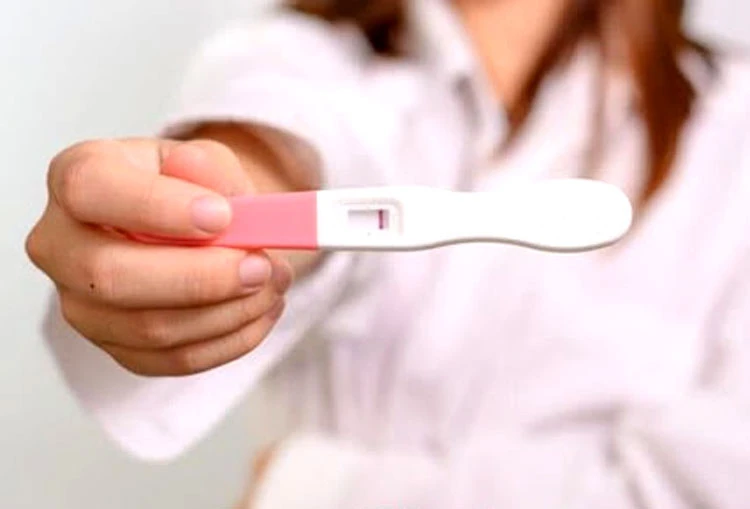

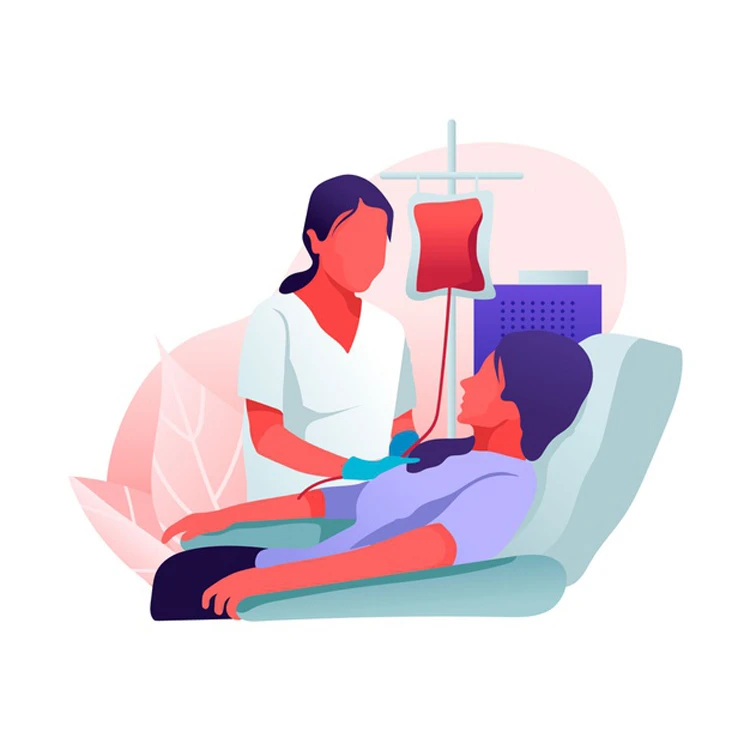


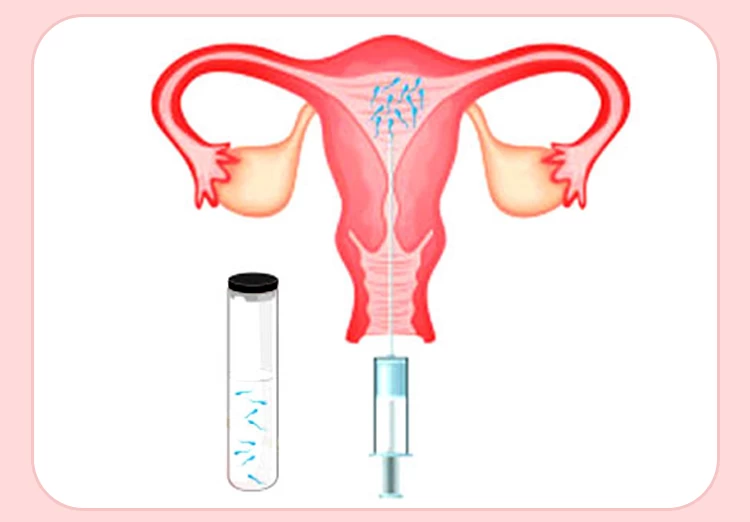



No reviews
Your comment